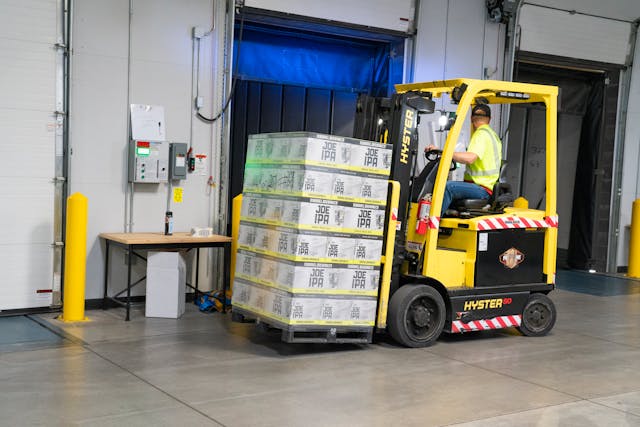Running as an owner operator in the transport industry isn’t just about moving freight from A to B—it’s about choosing the right freight type that brings stability, steady income, and long-term growth. Among the many freight options available, reefer freight stands out as a genuine game-changer. For drivers looking to increase profitability while securing consistent loads, refrigerated freight offers advantages that dry vans or flatbeds simply can’t match.
In this guide, we’ll unpack why reefer freight has become so valuable for owner operators, how it works in the real world, and what practical steps you can take to make it work for you.
What Is Reefer Freight?
“Reefer” is industry slang for refrigerated trailers—specialised units fitted with temperature-control systems. These trailers are essential for transporting goods that need to stay within a specific temperature range, such as:
- Fresh produce
- Dairy products
- Meat and seafood
- Pharmaceuticals
- Flowers and plants
This type of freight is critical because many of these industries run year-round. That means owner operators who haul reefers aren’t just relying on seasonal spikes—they’re tapping into consistent demand.
Why Owner Operators Benefit from Reefer Freight
1. Consistent Demand
One of the biggest challenges for independent truckies is keeping the wheels turning with reliable loads. Reefer freight offers a safety net: supermarkets, pharmacies, and food chains always need temperature-sensitive products delivered, regardless of the season. Even when certain industries slow down, reefer drivers often stay busy.
2. Higher Rates
Reefer loads typically pay more per kilometre than dry van freight. The reasoning is simple: customers pay extra for time-sensitive, delicate cargo that requires precise handling and specialised equipment. While rates fluctuate, refrigerated freight tends to hold a premium position in the market.
3. Less Competition
Not every driver wants the added responsibility of hauling a refrigerated load. The extra training, maintenance, and vigilance required can discourage some. But for owner operators willing to invest in reefer freight, this means less competition and more bargaining power when negotiating rates.
4. Long-Term Partnerships
Reefer drivers often build stronger, repeat relationships with shippers. Once a business finds a reliable carrier who consistently delivers perishable goods on time and in top condition, they’re unlikely to switch. This creates an opportunity for long-term contracts instead of chasing one-off loads.
Challenges of Hauling Reefer Freight
Of course, reefer freight isn’t all smooth sailing. Here are some realities you’ll need to be prepared for:
- Tighter Schedules: Fresh produce and dairy don’t wait. Timely delivery is non-negotiable.
- Higher Maintenance Costs: Refrigerated trailers require regular servicing to keep cooling systems reliable.
- Extra Fuel Consumption: Running the refrigeration unit consumes additional diesel.
- Greater Responsibility: If temperatures aren’t maintained, entire loads can spoil—making insurance and careful monitoring essential.
While these challenges may sound daunting, many experienced operators argue that the rewards far outweigh the risks. With the right systems in place, reefer freight becomes manageable and profitable.
Practical Steps for Owner Operators Entering Reefer Freight
Step 1: Invest in a Quality Trailer
Start with a reliable refrigerated trailer. Buying used can save money, but ensure it has been well-maintained and serviced. Look for units with modern tracking and temperature-control systems for peace of mind.
Step 2: Learn Temperature Management
Understand how to set, monitor, and maintain correct temperatures. Many customers require detailed records, so knowing your way around the unit’s controls is essential.
Step 3: Build Relationships with Shippers
Instead of relying solely on load boards, focus on building direct relationships with shippers in industries like food distribution or pharmaceuticals. These clients value consistency and often pay higher rates for trusted carriers. For drivers actively searching for reefer freight owner operator jobs, networking with shippers and logistics companies can open doors to more stable and better-paying contracts.
Step 4: Stay Compliant
Know the regulations. Countries including Australia have strict food safety and cold chain requirements. Compliance ensures fewer delays, fewer rejected loads, and a stronger reputation in the industry.
Step 5: Manage Fuel Costs
Factor in the extra fuel used by your refrigeration unit. Many successful operators use fuel surcharge agreements to cover this cost, protecting profit margins.
Checklist: Is Reefer Freight Right for You?
- ✅ You’re willing to manage time-sensitive deliveries
- ✅ You’re ready to invest in trailer maintenance
- ✅ You want steadier demand and income
- ✅ You prefer long-term contracts over short-term loads
- ✅ You can manage extra responsibility for delicate freight
If you tick most of these boxes, reefer freight could be your path to higher profits and stability.
FAQs About Reefer Freight for Owner Operators
Q: Do I need special training to haul reefer freight?
While not always mandatory, training in temperature management and food safety handling can give you an edge.
Q: Are reefer loads really worth the higher maintenance costs?
Yes—most operators find that the higher freight rates more than make up for the additional expenses.
Q: How do I avoid rejected loads?
Always double-check trailer temperatures before loading, keep detailed logs, and follow delivery instructions carefully.
Q: Can reefer freight help me secure long-term work?
Absolutely. Shippers in the food and pharma industries often prefer building long-term partnerships with reliable carriers.
Final Thoughts
Reefer freight has transformed the careers of countless owner operators. By offering higher rates, consistent demand, and opportunities for strong business relationships, it’s one of the most strategic choices in today’s transport industry. Yes, the responsibility is greater, but so are the rewards.








Leave a Reply